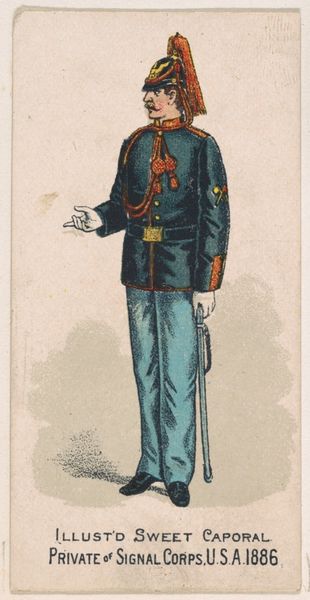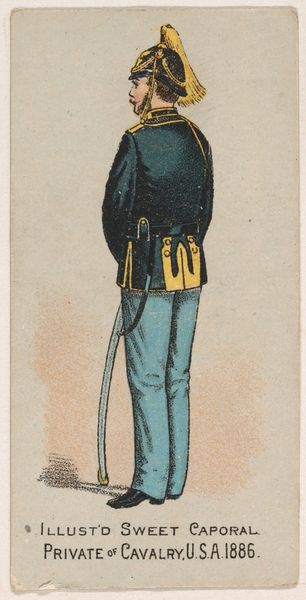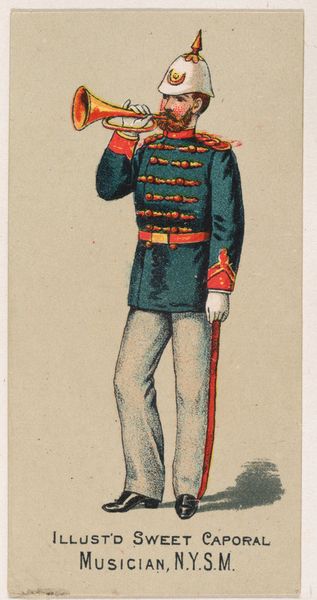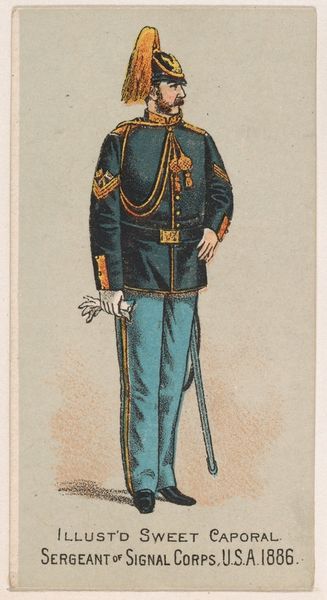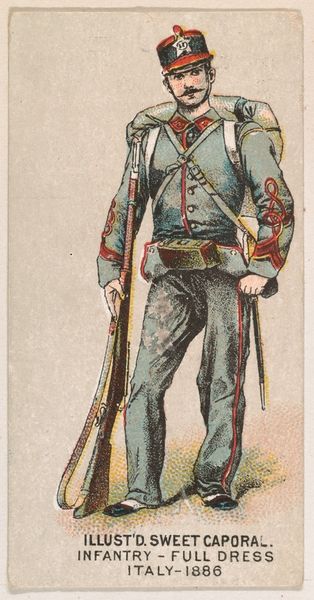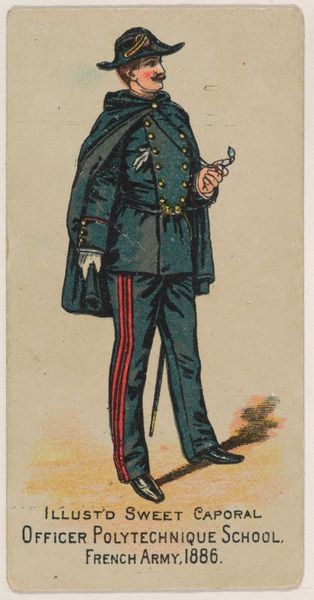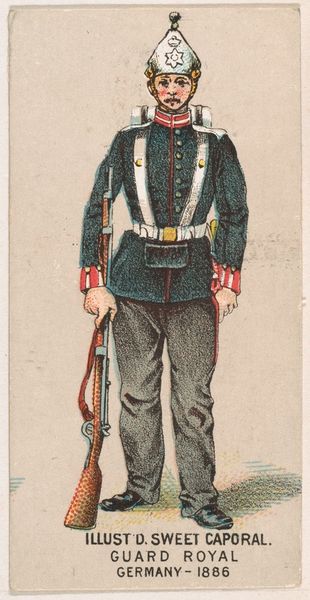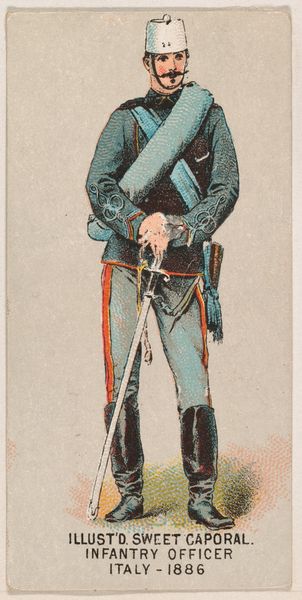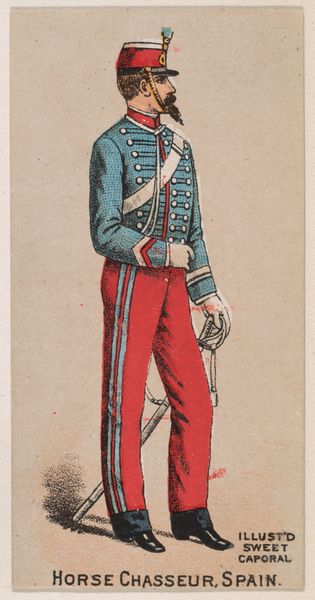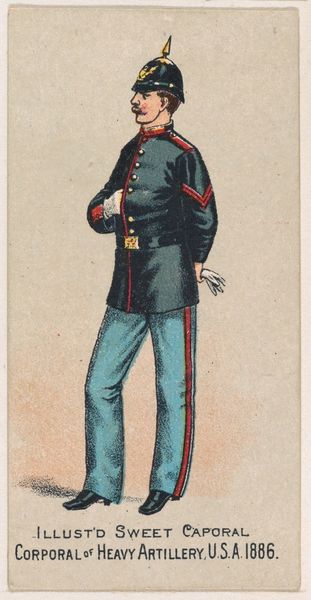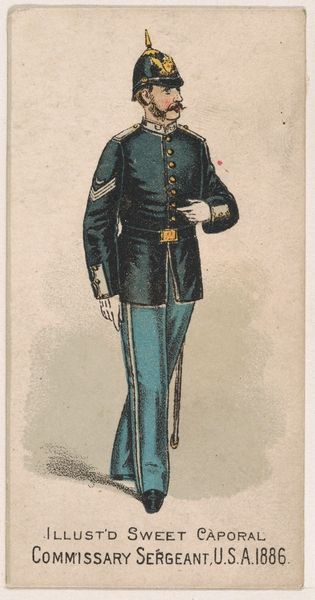
Sergeant, Light Artillery, United States Army, 1886, from the Military Series (N224) issued by Kinney Tobacco Company to promote Sweet Caporal Cigarettes 1888
0:00
0:00
drawing, print
#
portrait
#
drawing
#
narrative-art
# print
#
genre-painting
#
academic-art
#
sword
#
profile
Dimensions: Sheet: 2 3/4 × 1 1/2 in. (7 × 3.8 cm)
Copyright: Public Domain
Editor: This is “Sergeant, Light Artillery, United States Army, 1886” from the Military Series, created in 1888 by Kinney Tobacco Company. It’s a small print, meant as an advertisement, but the figure feels monumental. The sharp profile, the sword... what stands out to you in this piece? Curator: It's striking how this seemingly simple image encapsulates so much of the late 19th century's anxieties and aspirations. Consider the uniform: Every stripe, every button signifies hierarchy, order, and control. Do you see the bright plume? What might that symbolize for the culture consuming this image with their cigarettes? Editor: Maybe patriotism or national pride? It's part of this very specific image, but is it intended to transfer to the product somehow? Curator: Precisely. The iconography becomes entangled with the commodity. These weren't merely portraits, they were powerful symbols. Cigarettes linked with military prestige, suggesting a connection to strength and adventure. A cigarette as a symbol, of course, implies addiction, something that the iconography deliberately avoids. But consider that sword; a sword requires you to make it work. The association of a commodity to power is the underlying function of this portrait. Editor: So, this image acts as more than just a simple portrait, carrying a lot of loaded associations for the viewers? Curator: Exactly. It reveals how everyday images actively shape cultural memory and perpetuate certain ideals through coded symbolism. The uniform is a type of branding; a visual language understood then, and perhaps differently now. Editor: It’s incredible how much a small tobacco card can reveal about a culture's values. I'll definitely be looking closer at advertisements now! Curator: And that close look helps us see more of how our present continues to reflect those deeply-ingrained visual symbols of the past.
Comments
No comments
Be the first to comment and join the conversation on the ultimate creative platform.
